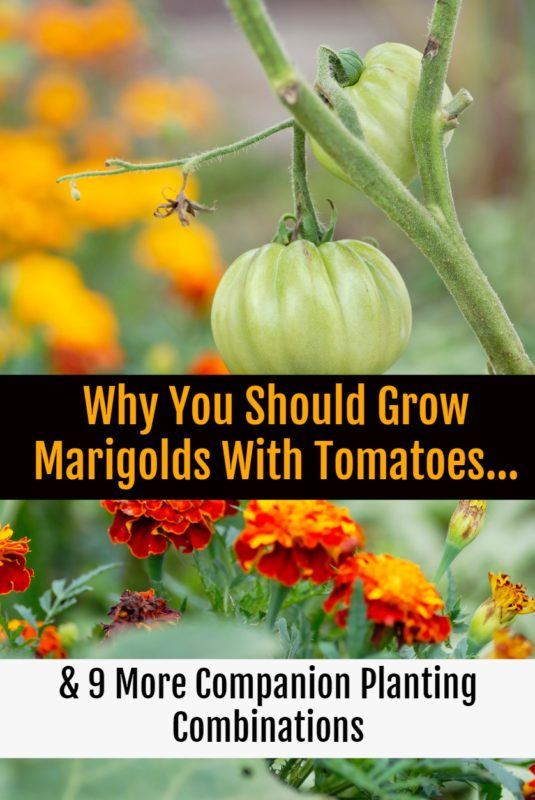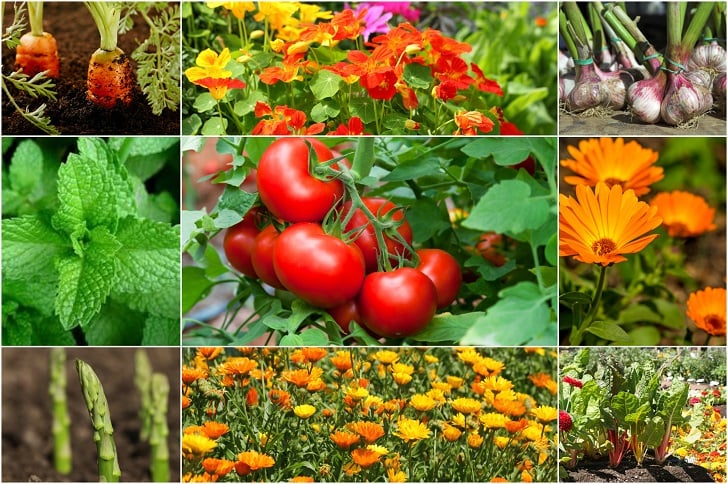
Companion planting has been practiced for a very long time. Native Americans were amongst the first to use companion plants to improve the vitality of plants.
According to Iroquois legend, planting corn, beans and squash together helps all these plants thrive and produce a better harvest. Many gardeners still practice this method of growing called the “three sisters” today.
Companion planting is all about finding plants that can exist together in a symbiotic fashion, helping one another.
Some companion plants help to deter pests, others provide shade and some even help to add nutrients to the soil.
To be successful with companion planting you need to know which plants do well together and which ones don’t. Grouping those that get along could just be the key to your garden success.
If you want to have the biggest and best tomatoes, consider companion planting. Here are ten plants that will help your tomatoes taste delicious.
1. Marigolds:
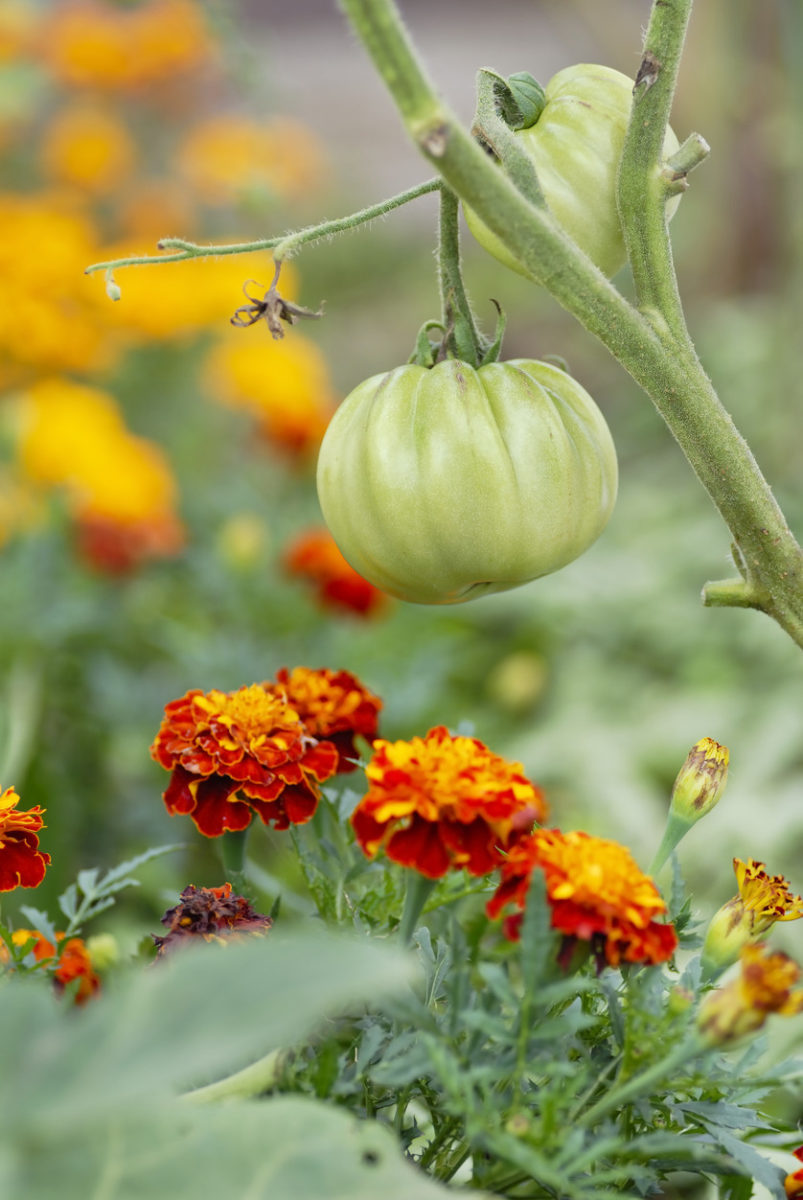
Some gardeners would never consider growing tomatoes without marigolds.
These bright and chipper annuals do a mighty wonder when it comes to deterring pests. They do this by producing a substance known as alpha-terthienyl. This substance reduces root-knot nematodes in the soil.
2. Borage:
This annual herb planted with tomatoes helps in a number of ways. It will repel tomato hornworms and cabbage worms. In addition, it will improve tomato health and flavor.
3. Mint:
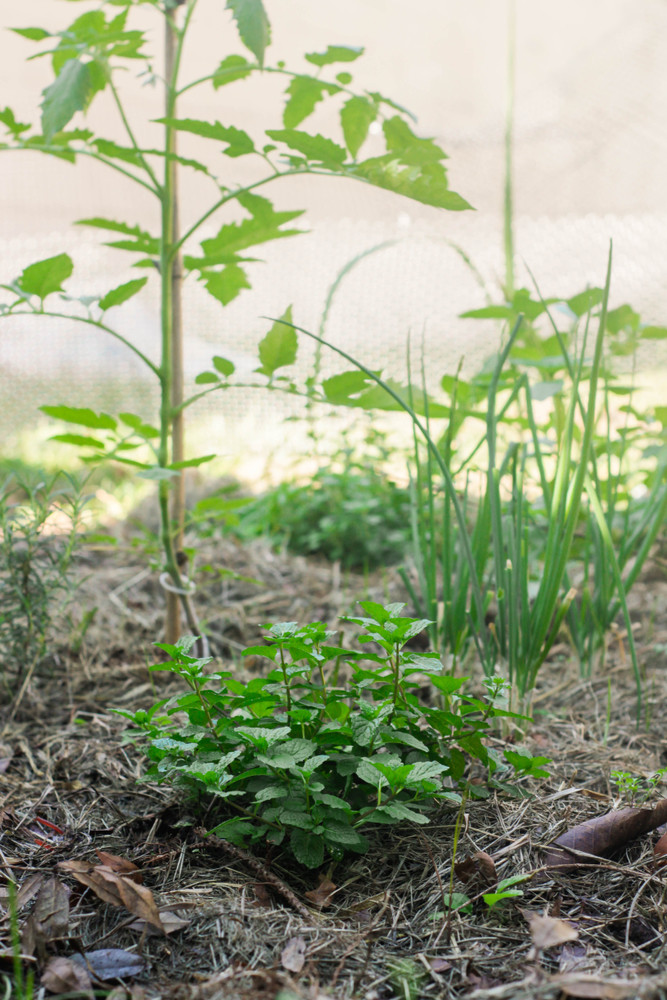
Mint is an aromatic perennial herb that can become invasive. It is best to plant mint in your garden in pots so that it does not overrun the show.
Although we may think that the aroma of mint is lovely, pests really hate it. Planting some mint near your tomato plants will even keep small rodents away.
4. Leaf lettuce:
If you grow leaf lettuce with your tomatoes it will act as a mulch to keep tomato plants cooler. It also helps reduce the chance that disease will spread from the water and soil to the tomato plants.
5. Chives:
This pretty herb not only helps improve the taste of tomatoes but also helps repel aphids and makes a great addition to any tomato salad.
6. Asparagus:
This yummy perennial vegetable produces a chemical that can kill nematodes. Tomatoes contain solanine, a substance that is toxic to the asparagus beetle.
In addition, tomatoes grow tall, creating shade around asparagus plants, thus not allowing weeds to grow.
7. Nasturtiums:
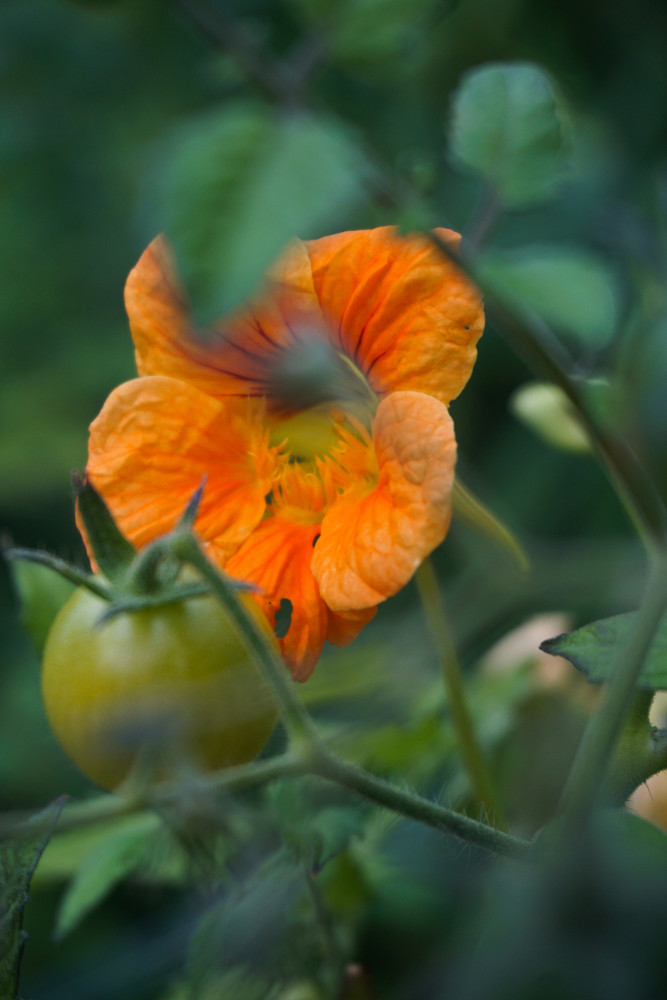
These pretty old-fashioned annual flowers not only add color and cheer to your garden but also do wonders protecting your tomato plants.
They deter whiteflies, squash bugs, beetles, and aphids while keeping fungal disease at bay. Although they are annual, they often reseed making them an even more delightful addition.
8. Garlic:
Planting garlic alongside your tomatoes will help to keep spider mites away. Besides, who doesn’t like a little fresh garlic in their tomato salad?
9. Calendula:
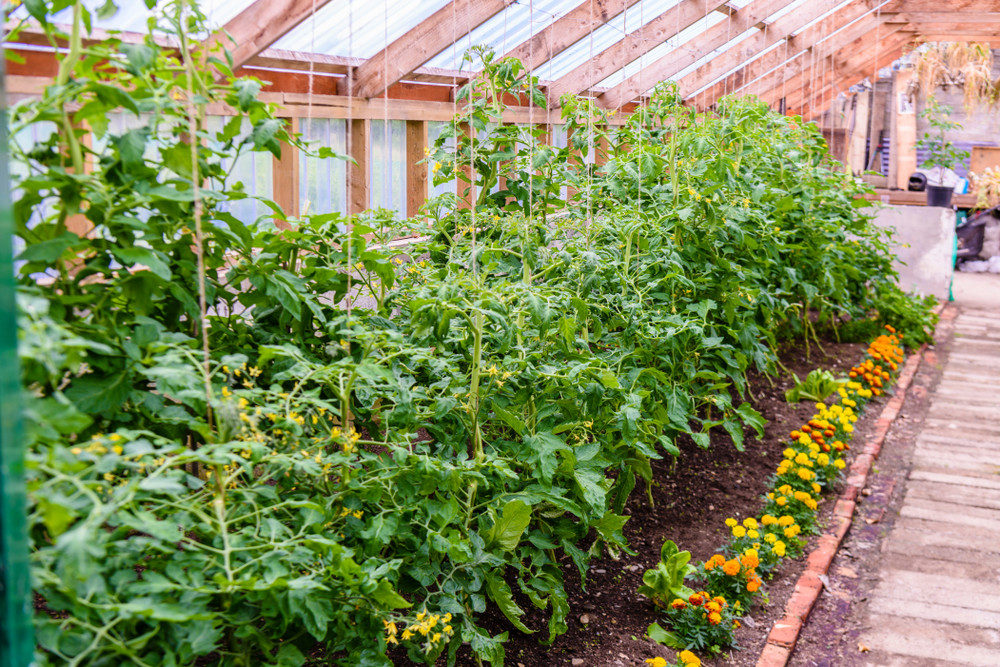
Calendula, although often called pot marigold, is an entirely different plant.
Both the leaves and blooms of this plant are edible and taste delicious in salads. When planted in between tomato plants, calendula is an effective natural way to control pests that feast on tomato plants. These pretty flowers also look sweet in a salad.
10. Carrots:
Carrots and tomatoes share space well. You can plant carrots when tomatoes are small and they will be ready to harvest by the time that the tomatoes are getting larger and needing more room. If you are short on space, this is a great way to increase your yield.
If you want the most from your tomatoes this year, consider some of these companion plants.
Pin This To Save For Later
